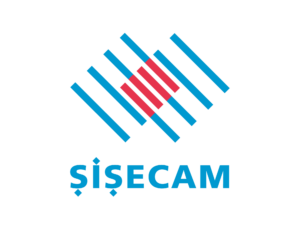Bringing together security and convenience, virtual data rooms (VDRs) today have become the go-to solution for sharing and collaborating on sensitive documents. Features like encrypted file storage, detailed permission management, dynamic watermarking and granular analytics of how guests are interacting with documents lets you do business whilst staying in full control.
Uses of virtual data rooms
If you’re considering investing in a virtual data room, you likely have one or more of the following needs in mind:
- Mergers and acquisitions (M&A): Facilitate M&A transactions by providing a secure platform for sharing confidential documents between parties.
- Fundraising: Attract potential investors and carry out due diligence by sharing financial statements, business plans, and other critical documents in a secure, easily accessible environment. Love, Bonito used a virtual data room to secure a funding of $50 million.
- Legal proceedings: You can manage and share large volumes of legal documents securely with lawyers, clients, and other stakeholders.
- Real estate transactions: Streamline property sales by providing access to contracts, appraisals, and other vital documents. Big names like JLL use virtual data rooms for sales and marketing of their commercial and industrial properties.
- Investor/board communications: Enhance corporate governance by securely sharing board meeting agendas, minutes, and other sensitive information with board members.
- Intellectual property management: Protect and manage intellectual property assets by controlling access to sensitive documents and monitoring user activity.
With your needs and goals in mind, different virtual data room providers are probably on your radar. But choosing the perfect provider in 2025 can be a lot of work given the many options available today.
This article will guide you through the selection process thoroughly helping you choose the best virtual data room provider for your needs.
Skip to section
- 5-step process to choosing a virtual data room provider
- Red flags to consider while choosing a virtual data room provider
- Introducing Digify
5-step process to choosing a virtual data room provider

We have broken down the complex process of choosing a virtual data room provider into 5 easy-to-follow and actionable steps. Each step is designed to bring you closer to making an informed and confident decision.
Step 1 – Analyze your needs
First, determine the primary need of a virtual data room and the timeline of your project. If you’re using it for a long-term use case like merger or acquisition, you’ll need robust features and flexible pricing to share large volumes of sensitive documents securely. If it’s for a one-time document sharing use-case, the requirements might be less stringent.
Depending on the use case and sensitivity of the documents, having a feature list and budget would make the selection process easier. If the VDR is going to be used by multiple parties during a deal, features such as Q&A for communication, real-time document editing, and version history can be very useful.
Analyze how you are willing to pay—some providers may charge per page, per user, or a flat monthly fee. A flat fee might be more cost-effective for a large number of users or documents. Some virtual data room companies offer flexible plans suitable for all projects.
Step 2 – Research available VDR providers
After identifying the needs and budget, look for the available data room vendors in the virtual data room market. A simple Google search like virtual data room for startups will give you multiple options.
Go through the feedback of different platforms on review sites like Capterra, G2, and TrustRadius. Pay attention to reviews from users in industries or with use cases similar to yours. Read the case studies on the providers’ websites to get an idea of the results achieved by current users.
You can use your connections on LinkedIn or other professional networks to easily connect with people who may have used VDRs in the past. Ask your questions on platforms like Reddit, Quora or other industry-specific communities. This way, people can share their first-hand experiences of specific VDR providers.
Step 3 – Evaluate their offerings
Once you have shortlisted a few VDR providers, the next step is to evaluate what each of them offers.
Features
- First and foremost, assess security features offered such as granular permissions, print and download restrictions, document expiry and more. Look for industry certifications as well.
- Look for features specific to your use case. If you are using it for M&A, then collaboration features like Q&A and guest groups would be required in the platform.
- Assess the ease of use of the VDR with intuitive interface, bulk uploads, indexing, and full text search features.
- If relevant for your use case, see if the virtual data room provider offers APIs and integrations to connect with your existing website, workflows or other apps.
Pricing
Next, assess how much you’d have to invest to get what you need from a virtual data room provider. There are different types of virtual data room pricing models available. Here’s how you can choose.
- Storage size: Some VDRs charge based on the amount of data stored. This model can be cost-effective for projects with large amounts of data.
- Per page pricing: This can be suitable for small projects with a clear number of documents.
- Number of users: Pricing based on user numbers is common. Understand if the data room cost scales with the addition of new users and what happens if you exceed the user limit.
- Feature-wise pricing: Some VDR providers may offer basic services with additional costs for advanced features. Decide if you need these features or if the basic plan is enough.
- Flat monthly rate: A flat-rate pricing model can be predictable and easy to budget for, especially if you need a wide range of features or the scope of the project is not well-defined. Perfect pricing for a virtual data room for startups.
Support
Ensure the provider offers support when you need it, considering different time zones if applicable. Look at the types of support offered (e.g., phone, email, live chat) and whether it is available 24/7. Revisit the reviews to gauge the responsiveness and helpfulness of the support team.
Note: Consider how long the provider has been in business and their reputation within the industry. Virtual data room providers who have been around longer often have refined their services and are more reliable.
Step 4 – Request demos and trials
After filtering the virtual data room vendors based on the offerings, the next step is to actively engage with potential providers to experience their platforms firsthand.
Reach out to the providers and schedule demos with their teams to see the virtual data rooms in action. Focus on key features you are interested in. It’s also important to ask as many cost-related questions in your interactions with the provider. Some of the data room companies offer trials. After the demo, you may sign up for a free trial to use the platform.
During the trial, test the data room by uploading documents, setting permissions, and other features. Involve your team who will be using the VDR extensively and gather feedback from them. You should also monitor the quality of customer support and training resources available.
Step 5 – Make a decision
After all this research, you are ready to make the final decision. But before you do that, you must to do the following
- List the pros and cons of each VDR provider based on features, ease of use, integration capabilities, security, and customer support. Use the analysis to reach a decision.
- Incorporate feedback from your team members who participated in the demos and trials.
- Do a cost vs. benefit analysis by assessing the data room cost against its ROI. Consider not only the upfront costs but also long-term expenses like additional features and scalability.
- If you have a contract in hand, carefully review the contract terms before signing. Pay attention to clauses related to data ownership, cancellation policies, renewal terms.
- Don’t hesitate to negotiate terms with the virtual data room provider as they are often willing to customize their offerings for your business.
- Develop a clear implementation plan to set up the VDR. This should include timelines, key milestones, training and roles and responsibilities.
Well, that’s how you do it! By following these five important steps, you’d be all set to pick a secure virtual data room solution that truly complements your project’s requirements.
Red flags to consider while choosing a virtual data room provider

Now, as you go about researching the best virtual data room solutions in the market, you’d encounter different offerings with a range of features and pricing structures but not all VDR providers are created equal.
Here are some deal-breaking red flags to watch out for during your selection process.
#1 Limited branding options
Limited branding options can make your data room look generic and less trustworthy to investors and other stakeholders.
The best virtual data room providers would give you the ability to customize the data room to reflect your brand identity. You should have the option to incorporate your company’s logo, brand colors, backgrounds, white label URLs and more.
These branding options create a professional appearance, enhance your company’s image, strengthen your reputation, and create a seamless experience for all parties involved in your transactions.
#2 Inability to build custom workflows and automations
If the VDR provider lacks the technology to support custom workflows and automations, you may find yourself manually managing and tracking documents across different apps. It is important to look for APIs and integrations in a data room to streamline document distribution, reduce manual work, and automate follow-up actions, especially if you have client/investor focused document workflows.
With APIs and integrations, you can fully integrate a data room to build custom solutions for your specific needs. This means you won’t have to develop a secure document sharing feature from scratch, avoiding delays in launch.
#3 Lack of transparent and flexible pricing
The next thing to watch out for is the transparent pricing. See if the plans are clearly visible on the website and outline the cost of usage – is it volume based or user based. Understand what features are included in each plan versus which ones are add ons.
Be aware of any document sharing limits and the extra costs for crossing these limits. A lack of transparency in pricing can lead to difficulty in determining the ROI of the data room and managing costs. Moreover, rigid pricing plans can make it challenging to access all the features you need unless you go for the highest-priced plan.
The right providers offer full flexibility, allowing you to create your custom plan by selecting different features of existing plans or add-ons. Such a pricing allows you to pay only for what you need without any additional expenses.
#4 Absence of free trial
A trial period allows you to test usability, features and measure its performance under real conditions without financial commitment. The absence of a free trial period is a red flag because it denies you the chance to verify that the offering aligns with your expectations, requirements and existing tools before investing.
Without a trial, there is a risk of committing to a virtual data room that may not match well with your requirements, leading to switching costs in the future.
#5 Negative customer reviews
Consistent negative reviews is a warning sign of underlying problems with the provider’s offerings which will ultimately affect your user satisfaction and operations.
It is important to cross-check the experience of existing customers. Look for patterns in feedback that may indicate major problems, such as issues with document access speeds, downtime, bugs, or security issues. Also, pay attention to how the company responds to such feedback and feature requests, as it indicates their commitment to customer satisfaction.
#6 Slow customer support
Slow responses from the support team may lead to downtime, transaction delays and interrupted access to critical documents during important negotiations or reviews. If current or ex-users report slow response times or limited availability of support staff, consider it a serious drawback.
Effective support should be available 24/7, especially for businesses operating across time zones or those that require immediate access to data rooms for time-sensitive processes. It helps to have the support team accessible via multiple channels such as phone, email, and live chat.
Introducing Virtual Data Rooms from Digify
Digify is a next-generation virtual data room provider that consistently delivers robust security features, an intuitive platform that’s easy to use, detailed analytics of how recipients are engaging and a wide range of options for customizations, including API integrations and white labeling.
We are not the only ones saying this. Hear it from our users.
- “We prefer using Digify because we’re able to control the access and see exactly who’s viewing, who’s able to download, and also get a detailed breakdown of the statistics .”— Lewis Bullivant, Logistics & Industrial Analyst for JLL Auckland
- “Digify is a simple yet secure tool that provided the necessary integration with the infrastructure we already use. This made picking and using Digify for our internal teams an obvious decision.” – Jonathan Agha, VP, Information security at WeWork
- “It’s very easy to use and navigate. We received excellent responses from our team members, clients and potential investors on the product.” – Joud, a Digify user on Capterra
- “As someone technologically challenged, I was somewhat hesitant to dive right in, but this software has really helped me and my firm look great and has dramatically raised our game.” – Robert, a Digify user on Capterra
Here are some of the reasons why companies like JLL, WeWork trust Digify;
- Comprehensive security features: Stay in control with features like dynamic watermarking, enforcing custom terms to view files, download and printing restrictions, screen shield to discourage screenshots and tripwire alerts to let you know if your files are leaked.
- Detailed Analytics: Get deep insights into document engagement such as who viewed your files, for how long, from where, or whether they were printed or downloaded. This data allows you to take informed decisions and time your follow-ups.
- Advanced branding:, Customize your data room by adding a configurable About page to explain your project, adding your own logos and brand colors. toe the login screen, backgrounds, email layouts and a white-labeled URL.
- Due diligence workflows: We make it easy for you to navigate the due diligence with special features like Q&A, version history, granular permissions, instant view notifications and more.
- 24×7 customer support via email and chat: Digify is easy to use and you can set it up without any training. However, our dedicated support team is reachable 24×7 through chat and email to ensure that help is always just a click away.
- Integrations and API:. We offer 6,000+ integrations via Zapier and flexible APIs that allow you to seamlessly connect the platform with your workflows, integrate a data room directly into your own platform via a simple iFrame or build your own apps.
- Flexible and transparent pricing: Unlike many vendors, we publish our pricing on our website for most of our plans. You can easily customize any plan and only pay for what you need without any hidden costs. There’s no minimum user limit to get started.
Plus, you can always try Digify for free without the burden of any financial commitment. Get started with a free trial today.










